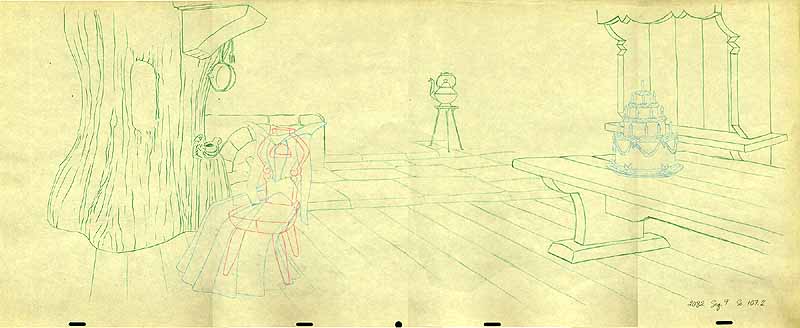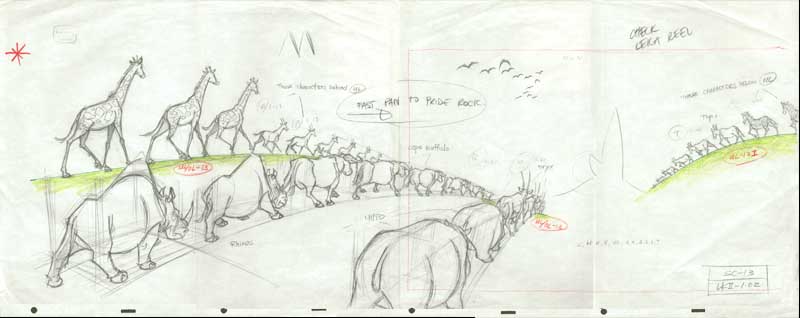
P.O.Box 100114, Anchorage, Alaska 99510-0114 1-800-646-5967
|
|
 P.O.Box 100114, Anchorage, Alaska 99510-0114 1-800-646-5967 |
|
|
|
| Layout - this drawing is created to draft out the stage for the animator's scene. It identifies the static elements of the stage for special effects or character animation that the animator must work with to convey the overall story. Typically these drawings are wider in scope to allow for the movement of a character(s) and can be separated on many different levels to plan for the depth of the final camera shot. These separate levels for the layout are often called "books." Layout drawings come in different forms of detail and are designs for the overall background paintings. | |
 Layout drawing, interior of cottage in the glenn,
Layout drawing, interior of cottage in the glenn, Sleeping Beauty, 1959. |
 Layout drawing, opening sequence,
Layout drawing, opening sequence, Simba's Pride Lion King II, 1998. |
| Copyright 1996,
The Animation Artshop, Inc. Last Updated Februay 1, 2000 |
Mickey Mouse and other related images Copyright, Walt Disney Company |